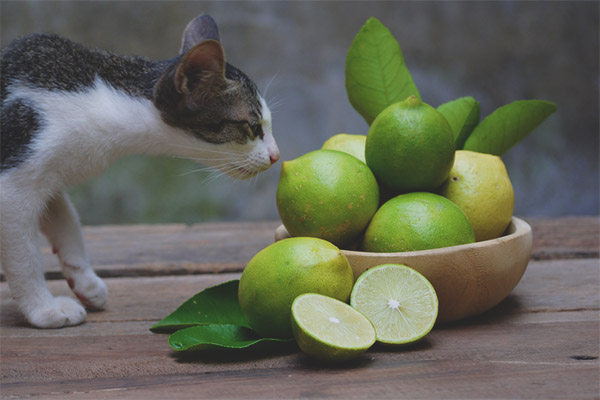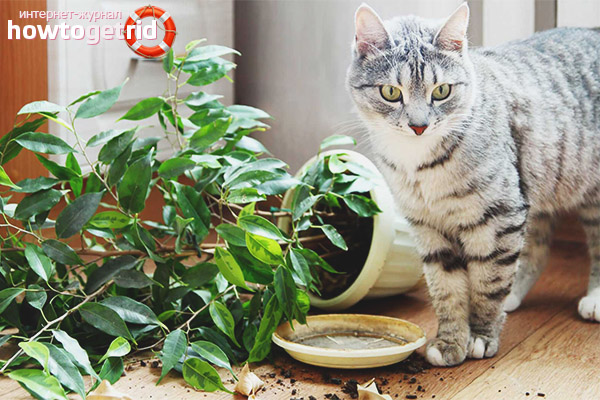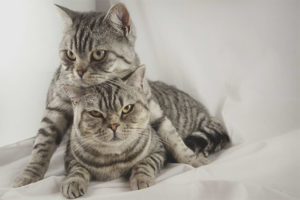The content of the article
The cat is undoubtedly a favorite pet of both adults and children. But, in addition to joy and emotion, animals can cause trouble and inconvenience. Some cats like to use corners for other purposes, and upholstered furniture is used by pets to sharpen nails. But this is not a problem at all for owners who know the peculiarities of the smell of cats. In places where cats should not show their livelihoods, you can apply substances with odors that scare them away. Only these actions should be performed with care, in order not to harm the pet, and not cause irritation to people living in this house.
What explains the strong effects of smells on cats?
A kitten is born blind, to explore the world around him, to correctly navigate in space, he is helped by natural sense of smell and touch. These feelings help him survive.The smells that the animal inhales directly affect its nervous system. In this regard, the behavior and mood of the animal can dramatically change, some smells like him, others are alarming, fear or disgust. Therefore, any smells at home, in order to wean the pets from something, must be applied correctly, because too strong smells can change the behavior and character of the cat, provoke aggression or anxiety.
Note! Too frequent use of pungent odors to re-educate an animal can adversely affect its nervous system and brain function.
Why do animals start to spoil in the wrong place?
Initially, you need to figure out why the cat stopped walking in the tray, and chose the corners for these purposes. It may not be necessary to protect corners. Often, the toilet filler is not suitable for cats, or it is too dirty. With a more frequent change of filler, the cat will stop “walking” into the corners.
An animal can get sick and thus attract attention. Therefore, the animal must be examined by a veterinarian and try to give it more care and affection.If there is another cat in the house, the pet will soon mark the territory, and this will pass with time when he gets used to the new “neighbor”.
Smells that cats do not like
Cats are keenly aware of all smells. Sometimes those scents that are pleasant to people are hated by pets.
- Some harsh perfumery discourages animals. If the cat has chosen a blanket where it leaves plenty of wool, or a corner of a sofa that is exposed to sharp claws, it is enough to sprinkle it with a sharp cologne or perfume. The sharper the fragrance, the better, and when it disappears, the cat will have a reflex by this time.
- Leaves of rue, or rather their butter, hate cats. It is enough to put a sprig of this plant in the place where the cat is forbidden to appear, and it will not fit there. The main thing - to observe the measures of caution to the person, because the plant can cause allergies.
- Citrus fruits, namely orange or lemon, are also an effective tool in the fight against favorite places of cats. If the cat makes a label in the wrong place, just sprinkle it with fresh lemon juice. Furniture that a pet scratches can be rubbed with an orange or lemon peel.If the animal sheds heavily, and the owners do not want to prevent the appearance of wool on the couch or chair, you need to periodically spray a mixture of lemon juice and water over the furniture. Polished surfaces can be treated with a citrus scent and periodically renew the scent. So the cat will not scratch this surface. Moreover, the aromas of orange or lemon are very pleasant to people and will not cause discomfort for the occupants of the premises.
- Cats deters the smell of garlic and onions. It is necessary to chop or grate the vegetables, and spread them in the corners, or mix the water with their juice. Animals will not come to the sprayed places, the smell is harsh for humans, but it has another plus, it kills bacteria in the air.
- Cotton pads soaked with lavender, rosemary or lemongrass oil can be spread out at the corners, and the animal will not mark these places. Essential oils without problems can be bought at any pharmacy. These smells cause anxiety in animals.
- If the animal marks the corners with urine, this smell will help to kill the vinegar, it will also help wean the animals away from these places. Cats react strongly to the sharp vinegar odor and bypass it, as it scares them and causes a feeling of fear and anxiety.
- Also, cats do not like the smell of strong alcohol.The smell of vodka, brandy or whiskey causes in cats nothing but disgust. In the corners, where the cat shits, just drop a little alcohol, and the animal will no longer fit this place.
How to protect plants from cats?
Cats love to rummage in a flower pot, or to play leaves of plants, to nibble them. Repellent sprays are dangerous for plants, therefore spraying them onto leaves and stems is not recommended. Cats are attracted by the smell of the soil, and it is precisely this that must be hidden by the owners of the animal by spreading pebbles, shells or cones on the surface of the earth.
- On the ground in a flower pot, you can put a little cut onions or lemon slices, it does not hurt the flowers, and scare the pet. As soon as the smell begins to erode, it needs to be updated.
- Cats do not like the smell of red pepper, sour apples and aloe. One of the components needs to be mixed with water and sprayed onto the surface of the leaves, one week is enough, and the cat will stop digging the flower pot and the flower itself. But before splashing onto the plant, the solution should be tested on a single sheet, if it does not harm it, you can safely spray the plant.
- In order for pets not to spoil the plant, you can get him a special "cat's grass", it is sold in pet stores, useful for cats.You can put it next to the frequent location of the animal, so the cat will understand that this plant is intended for her, and will not nibble other plants.
Recipes repellents that can be prepared at home
To combat the undesirable appearance of animals in certain places, you can buy ready-made solutions, or make them yourself. For example, a few drops of lemon, lavender and orange oil should be mixed, and then added to 60 ml of water. Water can be any, you need to spray in places where the appearance of cats is undesirable.
In hot water of 450 ml you need to add 3-4 lemons and oranges, and boil this mixture for about 20 minutes. Then you need to strain and cool the broth, add the juice of lemon 1 tbsp. spoon and a few drops of dishwashing liquid. The tool effectively wean animals to mark the corners in the house.
How not to harm a pet?
If the cat began to experience changes in behavior after the application of rearing smells, it is necessary to abandon this technique and turn to the veterinarian.
It is necessary to use means not only with care of comfort and integrity of furniture, but also with care of pets. In this way, it is possible to save the furniture and the corners of the room in perfect order without harm to the animal.












To send